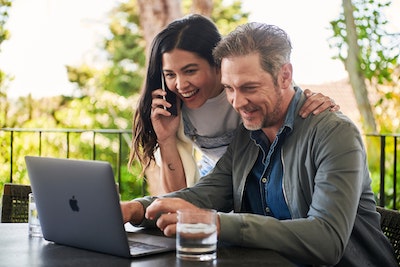Striking Balance with Technology

Developing a Healthy Relationship with Technology
We live in a highly digitized age where most of our lives are documented online. Whether it’s through social media, emails, work, or phone calls, most of us aren’t immune to social media. As I tried to settle into writing this blog, I had a cascade of thoughts. They weren’t profound, unusual, or even related to the task at hand. I wondered whether there was a hangover effect of weekend highlights that I was missing on Instagram, whether something interesting or important had popped up in my email inbox. Was there a new text? Should I change my Spotify playlist to get the right vibe to write?

Although they’re few and far between, some people do manage to get off the grid. My friend and colleague Sarah, who is studying clinical psychology, is among this group and in a recent conversation, she told me about the benefits she’s experienced disconnecting from social media over the past year.
Even before my conversation with Sarah, I knew that I compared myself to others and that sometimes it made me feel less than. I had no idea that there is a prominent link between social media and depression, anxiety, self-harm, even suicidal thoughts. Sarah helped me see that social media can make us feel inadequate about our life and our appearance. Social media can also trigger you. You’ve heard about FOMO (fear of missing out) and along with those feelings, it can activate cravings and make you want to drink or smoke a joint. So how do we turn the volume down in our heads and on our accounts? Sarah had a few suggestions:
- Unfollow accounts that trigger you (partying or alcohol companies)
- Take a tech break, a walk with your phone on vibrate, or leave it behind!
- If too much technological stimulus makes you want to drink, plan an outing for the time of day when the overwhelm kicks in. Put a Starbucks date on your calendar.
- Be intentional about your interactions. Text a friend a food update, or a comment about your day instead of scrolling mindlessly.
- Use Google Digital Wellbeing to set boundaries around your digital consumption.
- Delete social media apps from your phone or remove shortcuts on your computer.
- Be intentional about your social media use. Use it to learn more about areas of passion like arts and culture or food/recipes.

I wanted to know if Sarah’s life really had changed after pulling the plug on social media. She’s still the same person but she compares herself less to other people. She no longer worries about what 500 people are doing. Instead, she focuses on the people close to her in her intimate circle of relationships. The most unexpected and inspiring benefit of slowing down her social media use has been that Sarah takes more walks. She loves to get out in nature and even takes some of her work meetings while walking. She feels more grounded and in tune with her mental and physical wellbeing.
Talking to Sarah made me reflect on my own mindless usage patterns. I’m taking small steps, removing social media from the apps on my phone, giving Digital Wellbeing a try, and taking time in the day to be creative or active without my phone by my side. Already, I feel a greater sense of calm and connection. Give Sarah’s approach a try; find a way to make social media work for you.
Access the ALAViDA TRAiL app.